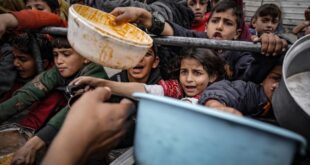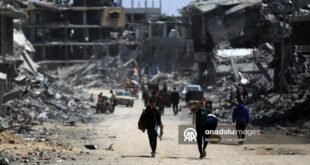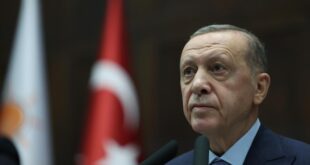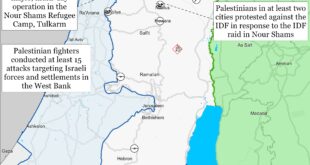Following the Nagorno-Karabakh ceasefire agreement signed in Moscow on November 9, 2020, between Armenia and Azerbaijan, the Russian Defense Ministry announced that units of the Military Police (MP) will be part of Russian peacekeeping in the South Caucasus for an initial period of five years. The deployment of the MP in Nagorno-Karabakh has shed light on the growing role of this relatively recent structure in Moscow’s foreign interventions. The organization was created in 2011 in the wider context of the Novyi oblik (“new look”) reforms launched in late 2008. Partly drawing on foreign models, it is an interesting case of military emulation. During its first years of existence, the MP was hampered by a lack of legitimacy within the Russian armed forces. Moscow’s intervention in Syria in late 2015 was a turning point: since then, the scope of MP missions has been considerably extended, and it has attained the authority it previously lacked within the Russian armed forces.
A New Structure in the Russian Military
Officially created in 2011, the MP ranks among the structures, such as the Special Operations Command, developed in the context of the Russian armed forces reforms in the late 2000s—following the Russo-Georgian war. Whereas the MP is a newcomer within the Russian military, debates on the opportunity to establish this structure largely predate its actual creation. During the late 1980s, in a context of rising awareness both from the Soviet leadership and the nascent civil society of the problems posed by dedovshina (a phenomenon of hazing and other forms of violence on young conscripts), debates over the creation of MP similar to the ones existing in Western militaries arose. In 1989, it was proposed to create experimental units of MP in two military regions and in the Northern Fleet, a move that did not come to fruition in the context of the collapse of the Soviet Union.
Throughout the 1990s, in addition to dedovshina, many issues such as theft and corruption only got worse within the Russian armed forces, and the idea of establishing an MP reemerged. In 1996, the State Duma Defence Committee proposed a draft law to create an MP. The law was not passed; economic considerations aside, the Defense Ministry apparatus expressed its opposition to the project because under this law, the MP would have been independent of the Defense Ministry. Ten years later, President Vladimir Putin weighed in on the debate. He commented during a press conference held at the Kremlin on January 2006 about another dramatic incident of dedovshina involving a young conscript at the Chelyabinsk tank academy whose legs had to be amputated after he was beaten by his peers. Putin said that “discipline should be improved,” and the defense minister would soon make proposals in that direction, “including the creation of a Military Police.”
The launching of this Novyi oblik reform was a turning point in the history of the Russian military because, for the first time since the collapse of the Soviet Union, the political leadership managed to impose numerous systemic changes on the armed forces, despite the opposition of numerous high-ranking officers. In several respects, the creation of the MP epitomizes this trend.
Paramount is the role of foreign influences on the development of a Russian MP. For instance, receiving a better understanding of how the U.S. Military Police is structured and operates was a key priority for the Russian side in its military cooperation with the United States that took place during the Obama reset. The Russian high military command never hid the causal role of foreign models in the shaping of the MP. During a conference with defense attachés in Moscow in December 2012, Russian General Chief of Staff Valery Gerasimov declared, “We have studied the experience of countries where there exist military police within the armed forces and are now in the process of creating contingents and central organs of our own military police.” In addition, to proceed from a partial emulation of foreign models, the new structure also integrates entities that were performing military-police functions during the Soviet period, such as the military car inspection.
The first version of the MP, unveiled in December 2011, is a far cry from what Anatoly Serdyukov, then-defense minister, intended initially. He aimed at giving the MP the authority to maintain discipline but also to investigate crimes committed by military personnel. Such a proposal was rejected by the Chief Military Prosecutor’s Office, i.e., the department in charge of military affairs within the General Prosecutor’s Office of the Russian Federation, and also by the FSB, which claimed that such a prospect might hinder the work of its counter-intelligence department.
The Lubyanka opposition to granting the MP with investigative functions is another example of the many turf battles that broke out during the Serdyukov reforms both within the Defense Ministry and between the Defense Ministry and other siloviki structures (primarily the FSB). Commenting on that opposition, Franz Klintsevich, then chairman-deputy of the Duma Defense Committee, stated that “Serdyukov wanted to make the military police a security service above the already existing security services.”
Russia’s newly-created MP is a limited version of what was initially planned in terms of functions and size. Whereas Serdyukov envisioned a 20,000 strong MP, the Defence Ministry Military Police Main Directorate was staffed at its creation with about 6,000 to 7,000 servicemen. The functions—enshrined by federal law in February 2014 and confirmed by presidential decree in March 2015—are to maintain discipline in the armed forces, safeguard military installations, and secure military convoys. Its creation is an important step that put an end to decades of discussion. However, during its first years of existence, this structure, both because of a lack of legitimacy and the absence of an investigative function, remained largely an empty shell.
Syria as a Successful Testing Ground for the Military Police
The Syrian campaign is a defining moment for the young MP. In addition to being sent abroad for the first time since its creation, the MP, throughout the Syrian experience, saw the scope of its mission considerably broadened.
Units of the MP were deployed since the outset of Moscow’s intervention in September 2015 to safeguard the Russian military base of Khmeimim. However, the real shift started in December 2016, when police battalions were sent to Aleppo after the city had been retaken by loyalist forces. Since then, every decisive territorial change in Syria has been followed by the deployment of MP. In May 2018, after rebels withdrew from southern Damascus neighborhoods, personnel from the MP started patrolling the area together with Syrian governmental forces. Also, in August 2018, the MP secured the first convoy of UN peacekeepers going across the buffer zone between Syria and Israel (Golan heights region) after the rebels left—and the MP remained there afterward. Following a landmark deal concluded with Turkey in October 2019, the MP, together with Turkish forces, began patrolling the Turkish-Syrian border in the north of Aleppo province.
Throughout these successive deployments, the MP was tasked with much broader duties than the ones they were originally designed for. On the one hand, units from the MP have been deployed to Syrian territory in order to secure Russian military bases, convoys, and checkpoints, thusly performing activities in line with those described in the 2015 presidential decree. On the other hand, they have been involved in a broad range of peace-building and peacekeeping missions, such as supporting local truces between rebels and loyalist forces (brokered by the Coordination Center for the Reconciliation of Opposing sides), ensuring security in areas retaken by the Syrian regime, or supervising the delivery of humanitarian aid to the population.
Another significant feature of the deployment of the MP in Syria lies in the very nature of its staffing: most of the personnel of the MP servicemen sent to Syria are drawn from various North-Caucasian republics, primarily Chechnya and Ingushetia. Three main sets of reasons can be identified to understand the reasons behind these ethnic deployments.
First, contrary to the annexation of Crimea, the military intervention in Syria has never received strong adhesion from Russian public opinion, which was quite firmly opposed to sending personnel on the ground. By deploying “Chechens,” Russia’s military command avoids the politically costly move of sending ethnic Russian soldiers. This bears a striking resemblance to the use of mercenaries from the so-called Wagner Group during the two Palmyra battles as force multipliers supporting elite members of the Special Operation Command and air forces. Moreover, the second aspect of such deployments also relates to the “parallel diplomacy” staged by Chechen leader Ramzan Kadyrov in Syria and in Libya. Last but not least, by sending Muslim soldiers sharing the same religion as the majority of the local population, the Russian command aimed for the “hearts and minds” of locals.
What makes the deployment of “Chechens” even more interesting is that some of these North Caucasians sent as MP in Syria were actually not part of the MP but of the GRU-spetsnaz, the special forces of the military intelligence services. The same strategy based on an “ethnic factor” was used forty years ago in Afghanistan when some Muslim battalions (also belonging to the intelligence services) composed of Soviet soldiers from Central Asian republics were sent to Afghanistan for peacekeeping operations following a ceasefire in the Panjshir Valley in 1983. In other words, the North-Caucasian MP battalions deployed in Syria can be considered as the heirs of the Muslim battalions used in Afghanistan, wearing the uniform of the MP, a structure created upon the influence of Western models.
With its deployment in Syria, the MP has become combat-proven and gained credibility and prestige. Initially created to mostly address discipline issues within the Russian armed forces, this structure has finally become a core element of Russia’s post-conflict and stabilization policy in Syria. Its activities toward the Syrian population indicates a growing Russian-military population-centric approach (civil-military operations) and complements the almost exclusively kinetic approach favored during the initial phase of the Russian intervention, which mostly consisted of air-strikes against rebel positions.
On another note, the numerous operational partnerships implemented between the Russian MP and a broad range of other actors, such as the Syrian armed forces, the Turkish armed forces, or the UN “blue helmets,” confirmed that strides have been made by the Russian military to develop operational cooperation with foreign actors, a template that is likely to be repeated in other theaters.
Russia’s Military Police Likely to Play Larger Role
The Syrian experience proved to be successful for the MP, as illustrated by the broad coverage of this structure by various media outlets (beyond those of the Russian Defense Ministry) and the efforts put into promoting and publicizing its activities in the Syrian region. Moreover, several reforms introduced to this structure following its deployment in Syria confirm its rise in importance.
In 2018, two so-called disciplinary battalions (remaining from the Soviet period) were transferred from regional military command to the MP. In 2019, it was finally permitted to conduct investigations and initiate criminal prosecution. The same year, drawing from lessons learned in Syria, a move to decentralize its command structure in order to make it more efficient was introduced, with the creation of the function of a deputy-commander in charge of the MP in each of the four military districts and in the Northern fleet joint strategic command. Moreover, MP units were created in the Baltic Fleet and in Russian military bases in Armenia and Tajikistan.
Finally, the deployment of the MP in the Nagorno-Karabakh region as part of the Russian peacekeeping contingent established following the ceasefire agreement signed in Moscow last November is further evidence that this structure has won its spurs. Its operational experience, partly gained from Syria, will be very useful for its new mission in Nagorno-Karabakh, as declared by Sergey Rudskoy, chief of the Main Operational Directorate of the General Staff of the Russian Armed Forces. There, the MP is tasked with a broad range of peacekeeping missions, such as patrolling along the ceasefire line or ensuring the free movement of persons and goods along the Lachin corridor.
Units from the MP also take part in the activities of the inter-agency humanitarian response center for Nagorno-Karabakh, established by Russian presidential decree on November 13. Gathering military and civilian representatives from various Russian state agencies such as the Ministry for Civil Defense, Emergencies and Elimination of Consequences of Natural Disasters, the Foreign Ministry, and the FSB, this center aims not only at coordinating the humanitarian aid provided to the local population but also fostering contact between Armenians, including those from Karabakh, and Azerbaijanis. Following the same pattern observed in Syria, Russia seeks to implement a holistic humanitarian approach in the Karabakh region, based on both CIMIC operations and cooperation with foreign actors, such as Armenia, Azerbaijan, Turkey, and the UN.
Conclusion
Less than a decade after its creation, Russia’s MP has managed to impose itself within the Russian armed forces thanks to a persuasive Syrian experience. Its establishment, adjustment, and gaining of legitimacy constitute a telling and successful example of reform within the Russian armed forces. It brings together several key triggers identified by the theory of military change, namely an initial impetus fostered by civilian intervention over a conservative military establishment and a development process partly based on the emulation of foreign models, primarily American, and partly based on military adaptation, i.e., the integration of lessons learned from its operational deployment in Syria. Following recent evolutions, it is poised to play an increasing role not only as the law enforcement agency within the Russian armed forces but foremost as a valuable asset in the Kremlin’s foreign interventions.
 Eurasia Press & News
Eurasia Press & News



